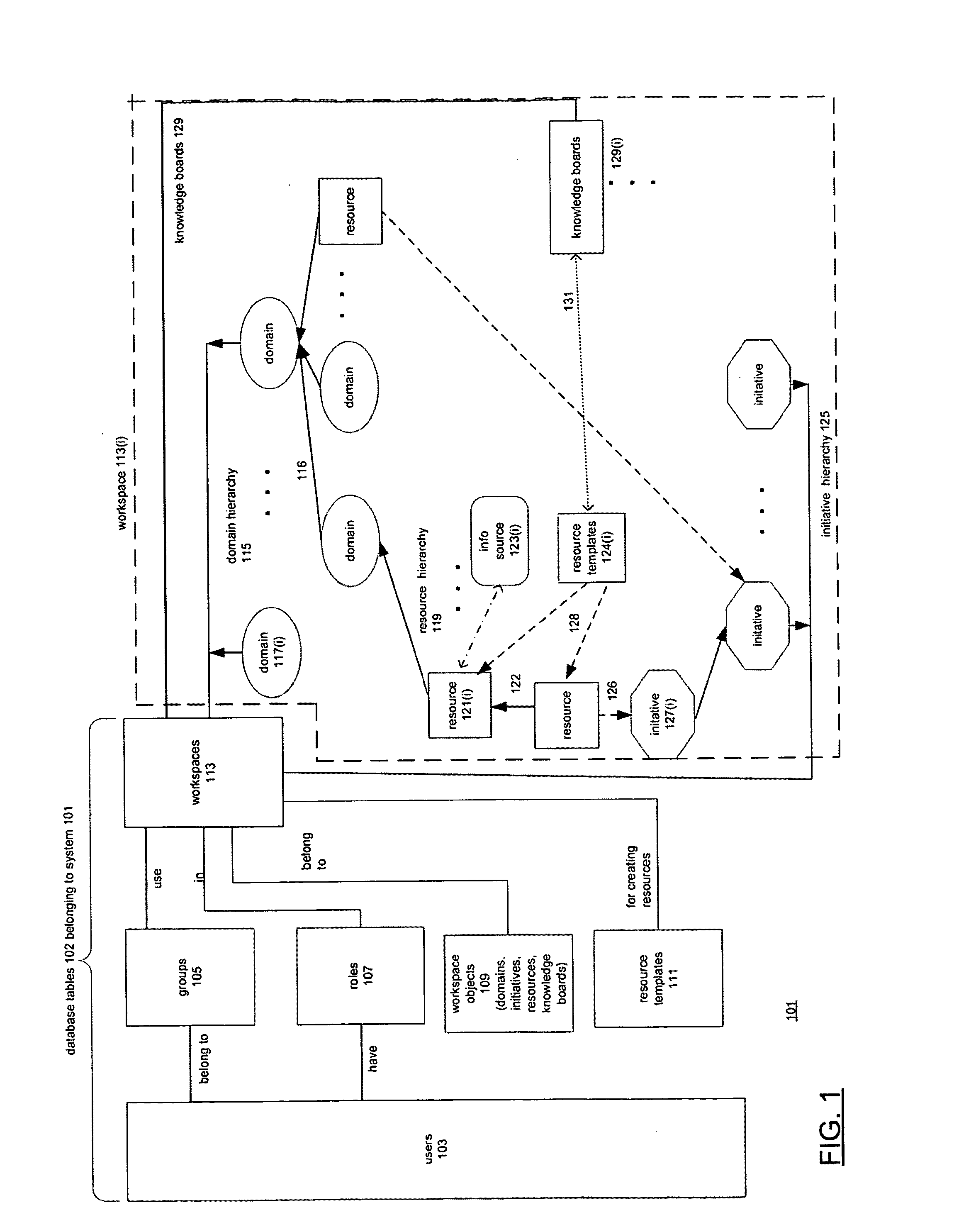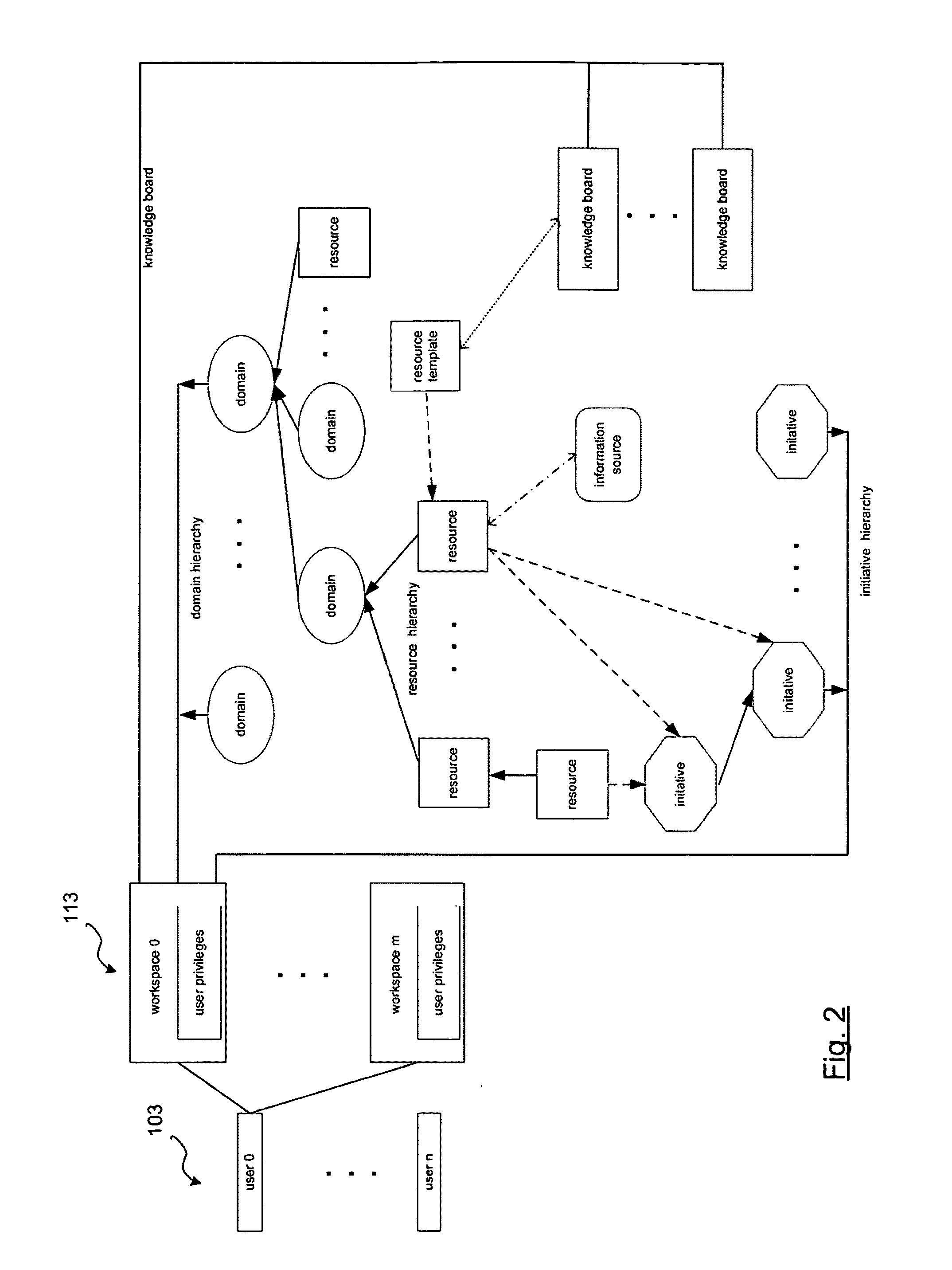A problem with these tools and
integrated systems for collaborative work is that they are very general.
To be sure, a skilled user of a tool such as a spreadsheet can adapt the tool to almost any purpose, but to do this, extensive
programming is required.
Such
programming requires a specialist, and the result of the
programming is often opaque to those who are not masters of the tool and of what is being represented.
Indeed, a general problem with tools that require extensive programming to adapt them to a user's needs is that the programming is usually done by a specialist who understands the tools or the system, but not the nature of the
collaboration, and as is usual in such situations, communication between the programming specialist and the users is usually difficult and sometimes impossible.
A limitation of the model 4101 is that it provides only one view of the hierarchies' structure.
This limits the usefulness of the model to more complex processes or organizations, where multiple views of the hierarchies would be helpful.
The system of the
Collaboration application, while providing access to a number of information sources in useful ways, did not support information sources that respond to parameterized information requests.
The difficulty with supporting parameterized information requests is that they are complex.
The technical aspects of supporting parameterized information requests are a barrier to and a limitation on their use.
There are difficulties and burdens associated with parameterized information request at several levels.
One burden is the need to have an appropriate
user interface for requesting and presenting particular information from particular information sources as needed by the user.
Another burden is that query request parameters often must be expressed in a special
query language.
Even for users who have some expertise in one particular language, the languages can be complex and awkward to use, and interfere with the tasks of real-time
collaboration and
information sharing.
A further barrier is that accessing multiple information sources generally requires expertise in multiple different programming systems, as different information sources are programmed differently.
A further barrier is that different kinds of information sources must be accessed by different programming protocols and interfaces.
However, this would be overly complex and awkward in many ways, for example: for every such connector query, defining a connector query to access data of a local resource required knowledge of the particular information structures of the tables in which the system was implemented; special expertise in the
SQL language was required for any user defining such a query, and in the particular
SQL dialect used in the implementation of the system with the RDBMS; the necessary access to the tables of the RDBMS raised significant security concerns and complications both with regards to opening access to the internal tables of the RDBMS, and to defining and maintaining appropriate security permissions via the internal security features of the RDBMS; and further, all such connector queries that may have been defined by different users at different times were at risk of failing, or having to be changed, whenever a change was made to the implementation of the system in RDBMS.
Previous solutions for information merging entailed considerable complexity, for example by requiring implementation a specialized component to merge information from specific systems, such as an
SQL-connector, from two organizations that each have information sources for staff members working in a task-group for an emergency incident, but the two sources have different field names for the same information.
Creating such specialized components for a multitude of cases and uses would be burdensome and complex.
In addition, experience with the system of the Connector application showed that users at times need to access information of a current resource, such as values of data fields of the resource in order to combine it with other information, and the embodiment of the Connector application system did not provide an easy way for a user to accomplish this.
However, this would present many problems: for example, it would have been exceedingly complex for users to accomplish, and raised substantial concerns about security of accessing the RDBMS, as well as about
maintainability of any such specially-constructed queries if the RDBMS implementation of the embodiment were altered in any way.
Other solutions of the prior art were also problematically complex.
In the system of the Connector application, it was at possible to define a resource with greater amounts of information and correspondingly more UI information elements, but this was found to be insufficiently flexible, and to lead to difficulties such as resources with complex and large UIs with many information elements that were awkward to use.
 Login to View More
Login to View More  Login to View More
Login to View More 


